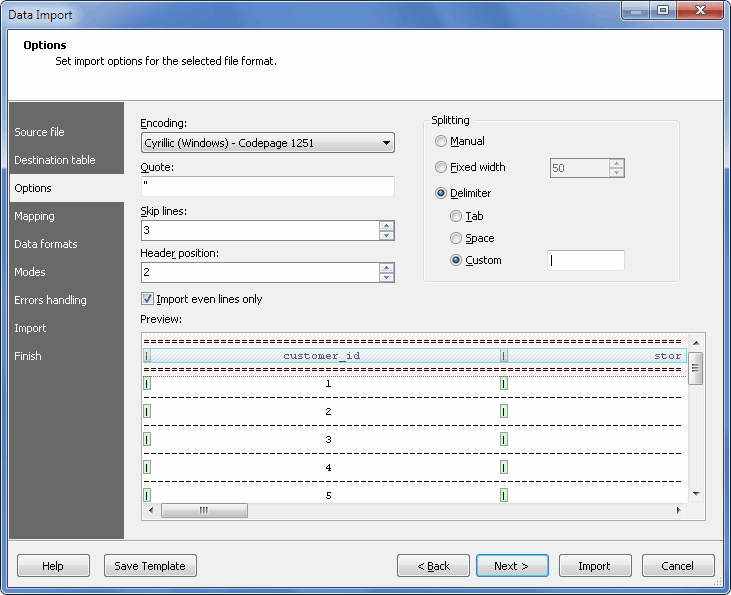Saving and Using Templates During Import
Last modified: October 23, 2019
A template is a set of import settings stored in a file.
It’s no use wasting your time on selecting the same settings each time you import data. Select once, save multiple settings to a file, and use it to have customized import without efforts.
For example, you need to import data stored in text format into an existing table once a day. You can set up the import options once, and next time all you need to do is to select Text import format and a location of Source data and click Import. To illustrate the case, let’s import .txt Source file to an existing table create a template, and then use it.
Creating Template
-
Open the Data Import wizard, and select Text import format and a path to .txt Source file.

-
Move to the Destination table wizard page, and select a Target Microsoft SQL Server connection and a database. Select Existing table and in the drop-down list select the table.
-
On the Options wizard page in the Skip lines field, enter 3 to start importing the Source data from the 4th line. As there is a header in the Source with column names, let’s specify its position, otherwise the imported columns will get default names - column1, column2. Enter 2 in the corresponding field. Select to import only even lines and Fixed width type of splitting for the Source data.

-
On the Mapping wizard page, you can see that dbForge Fusion for SQL Server has mapped all the Source and Target columns, as all of them have the same names.
-
One more thing is left. Let’s set Universal sortable date\time format for the Source data. On the Data formats wizard page, clear the Autodetect Date **and Time format **checkbox and select the format from the drop-down list.
-
Everything is appropriate, so click Import to start importing the data.
-
Click Save Template at the bottom and specify a name and a location of a template file in the Save As dialog box. Call it _txt_template. This template will appear in the User templates section.
Loading Template:
-
Click _txt_template, which was created following the aforementioned steps, in the Templates section on the first page of the Data Import wizard.
-
Select Text import format and a location of Source data.
-
On the Destination table wizard page, select the Target connection and database. Select Existing table and in the drop-down list select the table.
-
Move to the Options wizard page and see the Skip lines and Header position fields and Fixed width splitting type already selected. The same happens with mapping and a date\time format on the other wizard pages.
